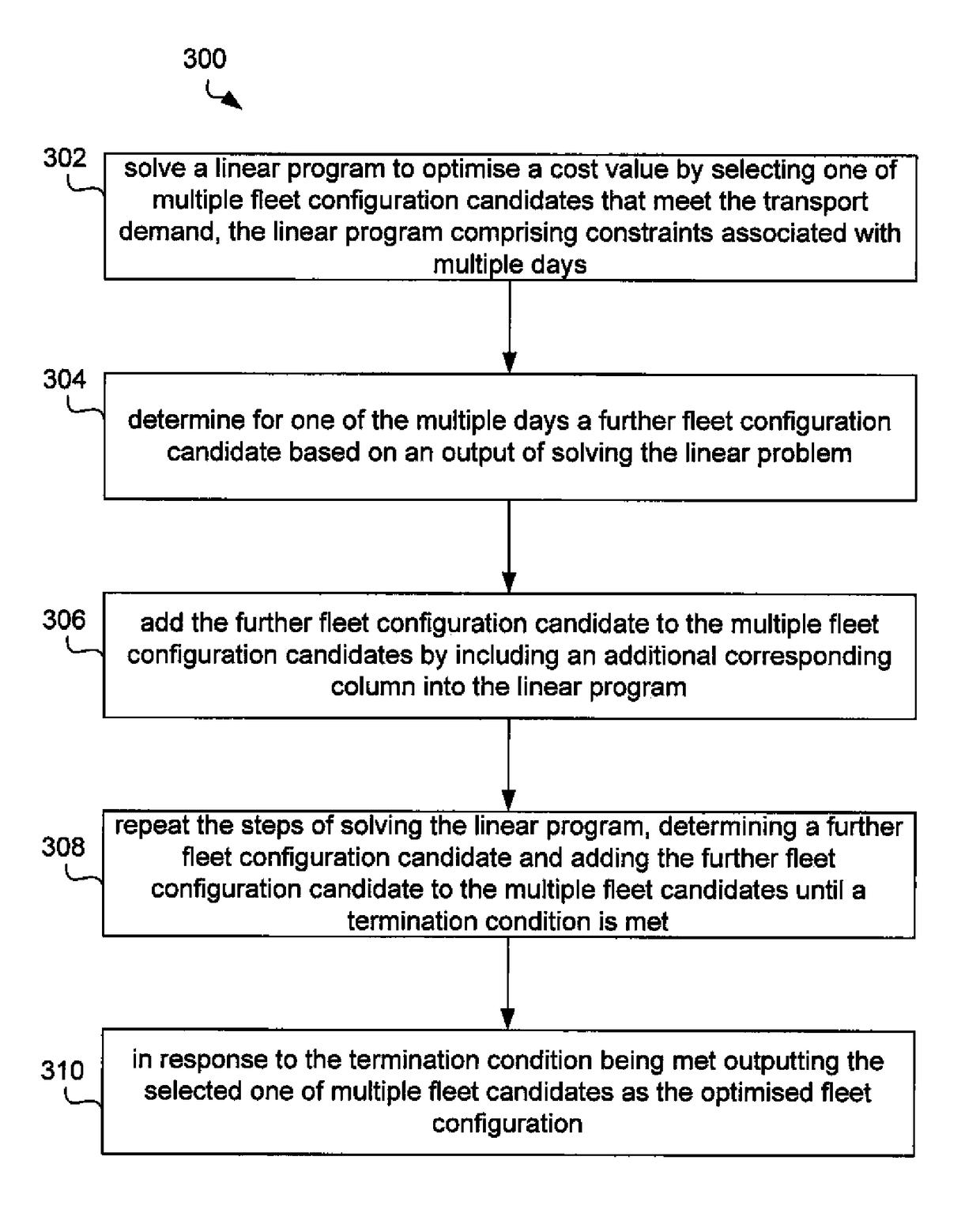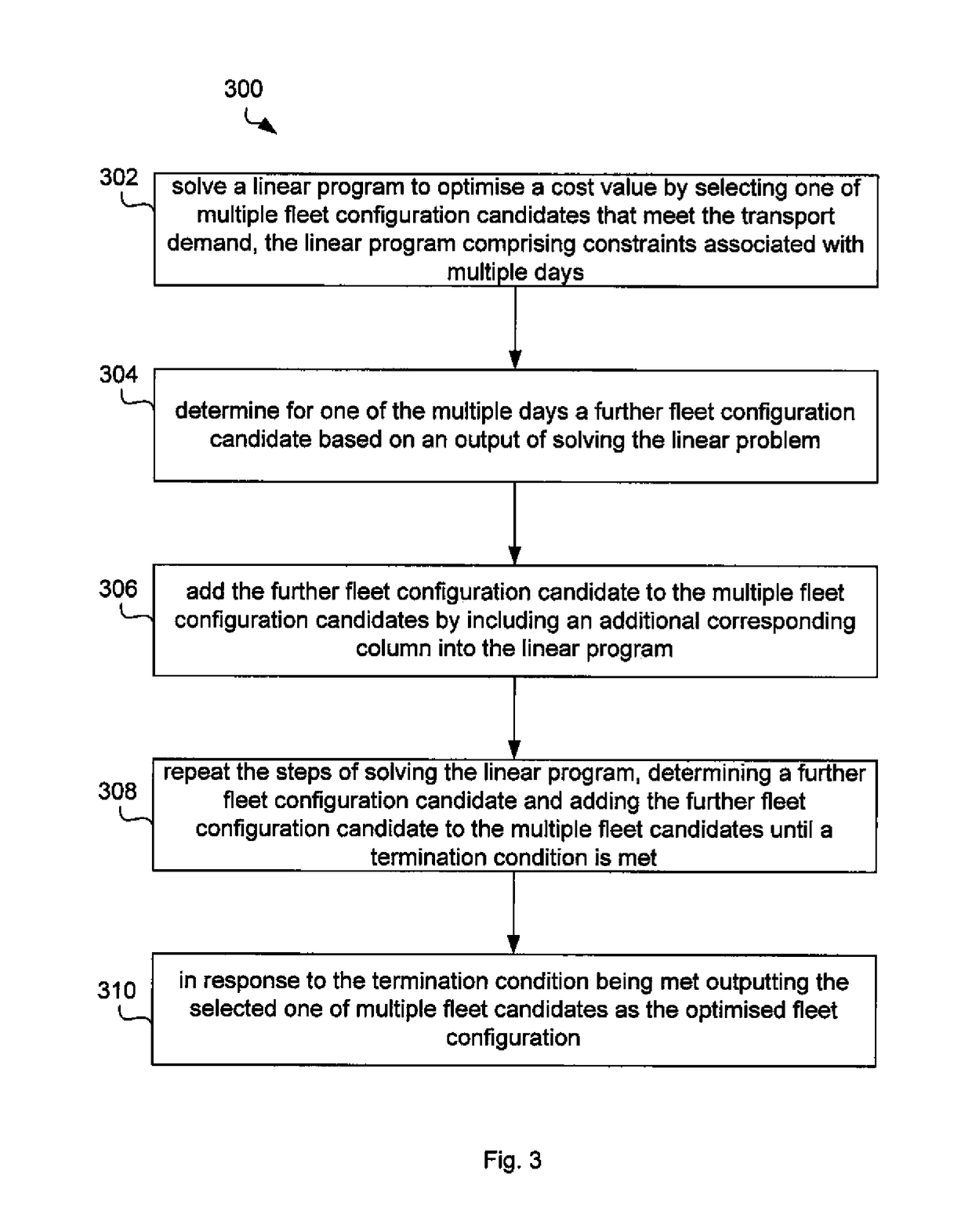Transporting goods using a fleet of vehicles
a technology of transportation goods and vehicles, applied in the direction of instruments, data processing applications, forecasting, etc., can solve the problems of limiting the complexity of problems that can be solved optimally, the digital specification of complex problems may be too large to be stored on memory, and the complexity of complex problems that would take years to solv
- Summary
- Abstract
- Description
- Claims
- Application Information
AI Technical Summary
Benefits of technology
Problems solved by technology
Method used
Image
Examples
Embodiment Construction
[0065]FIG. 1 illustrates a transport system 100 where a sender 101 delivers goods to multiple receivers, such as example receiver 102, over multiple transport links, such as example transport link 103. Each of the receivers has a demand for goods. The demand may specify a number or amount of the goods of a respective type and a time window when those goods arrive at the receiver, or many other constraints. The sender 101 can deliver the goods via a fleet of vehicles. It is in the interest of the sender to be able to easily configure this fleet vehicles to achieve efficient delivery of the goods at a minimum cost based on the demand of the receivers.
[0066]It is noted that the terms ‘sender’ and ‘receiver’ refer to processing centres, such as fulfilment centres, warehouses, depots, premises, parcel lockers and the like.
[0067]Transport system 100 further comprises a data collection server 105 and a processing server 106. The processing server 106 comprises a linear program solver 107 a...
PUM
 Login to View More
Login to View More Abstract
Description
Claims
Application Information
 Login to View More
Login to View More - R&D
- Intellectual Property
- Life Sciences
- Materials
- Tech Scout
- Unparalleled Data Quality
- Higher Quality Content
- 60% Fewer Hallucinations
Browse by: Latest US Patents, China's latest patents, Technical Efficacy Thesaurus, Application Domain, Technology Topic, Popular Technical Reports.
© 2025 PatSnap. All rights reserved.Legal|Privacy policy|Modern Slavery Act Transparency Statement|Sitemap|About US| Contact US: help@patsnap.com



